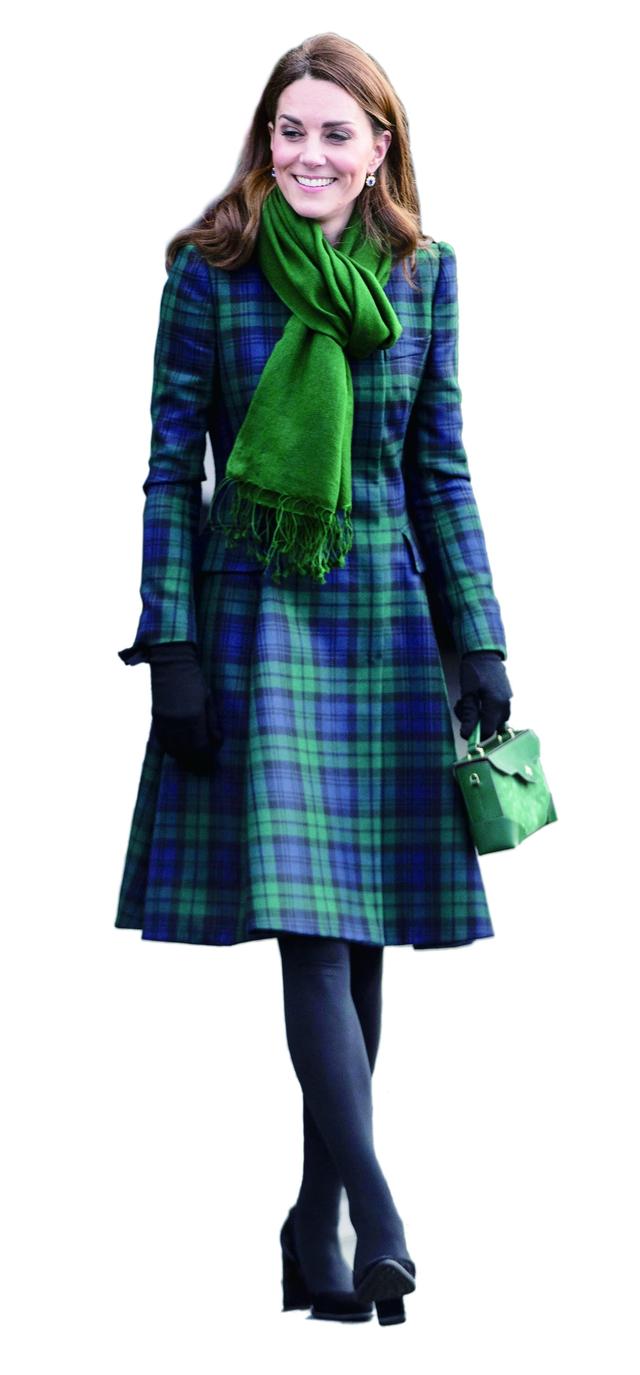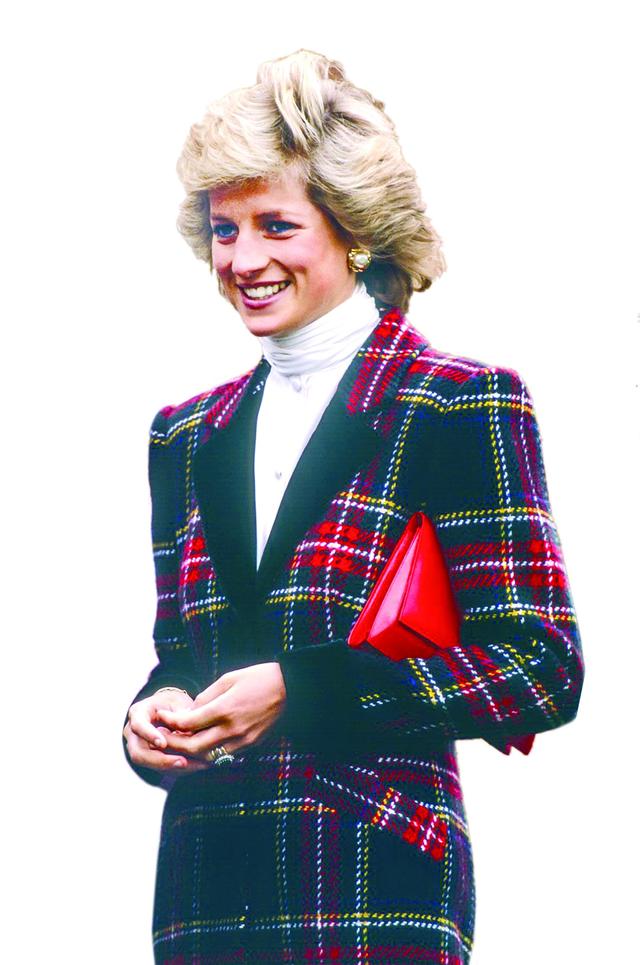Plaid, the fashion in British blood.

Photo caption 1: Princess Kate’s style in plaid dress.

Photo caption 2: The late Princess Diana dressed in plaid.
Special correspondent of this newspaper Chen Jiacun
Recently, members of the British royal family "wore" the same plaid scarf in public activities. The designer of the scarf was Charles III, who hoped to show the "soft power" of the British royal family. When it comes to British clothes, many people will see a variety of plaid patterns, such as Scottish plaid with unique national characteristics, iconic plaid of luxury brand Burberry, and plaid of thousands of birds necessary for fashionistas … British people like to wear all kinds of plaid patterns on their bodies, which are traditional, trendy, elegant or everyday. It can be said that plaid patterns have become an important representative element of British fashion.
Scottish tartan is full of historical charm.
Perhaps the most distinctive plaid dress in Britain is the Scottish tartan skirt. Wearing a traditional Scottish knee-length plaid skirt, long wool socks, matching a vest and shawl of the same color, hanging a small pocket with exquisite workmanship on the waist, and then picking up an organ, the piano bag is relaxed and the piano sounds melodious …
In people’s impression, plaid is a crisscross of different color lines on wool fabric. These lines are divided into multiple rectangular patterns to form a multi-color plaid combination, showing the aesthetic feeling of interwoven color blocks. It is reported that the earliest tartan in Scotland appeared around the 3rd century AD, and was woven from two different types of wool.
With the development of the times, the plaid pattern on wool fabric becomes more and more complicated. According to statistics, at present, there are as many as 7,000 kinds of plaid patterns registered in Scotland, and more than 500 kinds can be woven. Each plaid has its own name, fixed color scheme and pattern combination, and some of them have interesting stories behind them.
According to records, Celts are good at dyeing and knitting wool. Historically, Celts have demonstrated a person’s status through the number of stripes on clothes. For example, a king’s clothes can have seven stripes, while farmers can only wear one stripe. Later, tartan was once introduced as the symbol of various families in Scotland. During the war, tartan on the battlefield was regarded as a symbol of unity, used to distinguish between the enemy and ourselves, and also used to convey the determination to defend their homes. Scottish tartan tells the development, history and culture of Scottish textile technology. No wonder some people call it "a British history".
British royal family, with fire plaid fashion
In thousands of years, tartan patterns have also been inextricably linked with the British royal family. The plaid patterns in Britain are mainly divided into general patterns and non-general patterns. The general patterns can be worn by anyone, but the production and use of non-general patterns need to be approved by the designer. For example, Barmor Lear Plaid, which came out in the 19th century, can only be worn on the body with the explicit permission of the British monarch for a long time. This plaid pattern was designed by Queen Victoria’s husband, and it is in three colors: gray, black and red. Almost all British monarchs after Queen Victoria have passed through the Barmor Lear plaid. At that time, the only non-royal member who was allowed to wear Barmor’s Lear Plaid was a bagpiper who served the British monarch.
Some tartan patterns have changed from strictly restricted non-universal to universal, such as Royal Stewart tartan. This pattern is Queen Elizabeth II’s "exclusive plaid". Apart from the Queen, many other members of the royal family have also appeared and taken photos in clothes with this pattern, making it one of the most famous plaid patterns in the world. Royal Stewart plaid patterns include red, blue, green and black, and there are many variations, representing different clan branches. Charles III also has his own plaid style.
The British royal family also carries many plaids, such as the famous Prince of Wales plaid. People often think that this plaid will be more elegant in suits. Charles III, Princess Diana, Princess Kate and even Beatles have worn clothes with Prince of Wales plaid. Prince of Wales Plaid is also called Glen Plaid, and its name is inspired by a manor in Scotland. This plaid is composed of three colors of black, white and gray, and the pattern is somewhat complicated-small plaids are intertwined with large plaids. King Edward VII of England first fell in love with this pattern of fabric, and Edward VIII completely brought it into the fashion circle. This pattern is suitable for outdoor scenes, can be paired with jeans, casual and chic, and is also suitable for more important occasions, and can be slightly decorated like a king.
Another plaid style favored by the royal family is the houndstooth plaid, which originated from Glenge, also known as the dog’s tooth plaid-two colors of "canine teeth" are interlaced and diagonally woven together, and the queen, princess, duchess and so on have all worn houndstooth plaid coats to attend public activities.
Living in England, plaid is everywhere.
The British people are still full of love for plaid. Apart from the Scottish plaid skirt worn by the guards of honor at the festival ceremony, plaid also goes deep into all aspects of British life, such as shirts, windbreakers, scarves, hats, gloves, sweaters, cloaks, slippers and handbags … Global Times reporters live in London and find that English or traditional or modern plaid can be found in almost all textiles, even to home decoration, floors and ceilings.
In order to better protect and count the traditional Scottish tartan patterns, in 2009, the Scottish tartan registry was officially put into operation, which was responsible for registering the information of existing tartan patterns and providing registration services for new patterns. Its database is constantly expanding. According to the website information of the registry, at the end of 2023, a newly registered plaid pattern was named "Light of Prism" to pay tribute to Newton and his book "Optics". The designer said that this work is not only a pattern, but also a story about light and discovery.
From classical to avant-garde, from tradition to trend, the love of plaid in British blood has flowed from the past to the present, and the inspiration from different cultures and eras has blended and gathered, allowing the British to wear more tolerance and diversity. ▲
Reporting/feedback